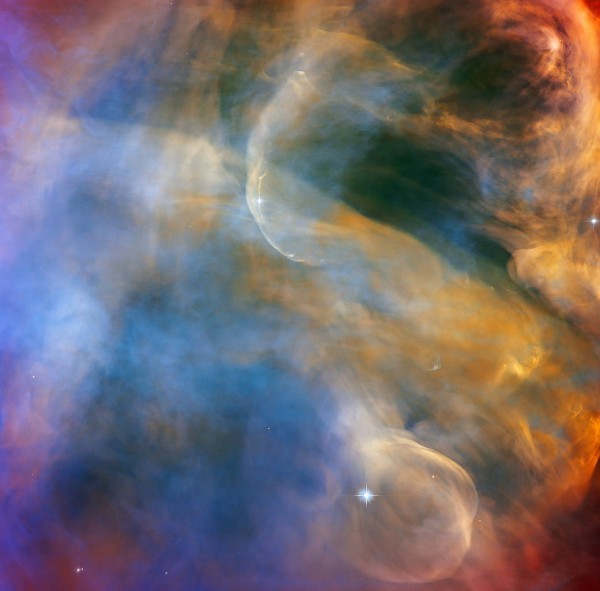The Orion Nebula, known as the "picture book of star creation," is located in the constellation Orion, 1,350 light-years from Earth, and has been the subject of the most meticulously clear and detailed images ever taken by the NASA's James Webb Space Telescope.

All Elements in the Orion Nebula
Ionized gas, hydrocarbons, molecular gas, dust, and scattered starlight are all shown in this composite image created by combining the results of several different filters.
The Orion Bar, which spans from top left to bottom right in this view and contains the bright star 2 Orionis A, is the object that stands out the most. It is also described as a wall of thick gas and dust.
The Trapezium Cluster, situated just off the top right of the photograph, is a collection of hot, young, massive stars that dazzle the entire scene. In the top right, a heated, ionized atmosphere is created by the powerful UV radiation of the Trapezium cluster, which is also progressively eroding the Orion Bar.
In the protected environment provided by the dense Bar, molecules and dust can survive longer, but the surge of stellar activity molds a region that exhibits an astonishing diversity of filaments, globules, young stars with discs, and voids, according to PDRs4All.
The most recent photographs show numerous magnificent structures at scales as small as 40 astronomical units or around the size of our solar system.
According to a press release from the University of Michigan, these structures contain several dense matter filaments that could trigger the emergence of a new generation of stars.
Scientists from more than 100 different institutions across 18 different nations collaborated under the name PDRs4All to acquire the photos as part of the Early Release Science initiative.
Hubble's Dreamy Image of Orion Nebula
A huge, dense cloud of interstellar dust and gas is floating between the stars Alnitak, Saif, and Rigel. The Orion Nebula, one of the Milky Way's most explored and photographed objects, essentially serves as a nursery for baby stars.
The Hubble Space Telescope of NASA/ESA also captured this beautiful region in the Orion Nebula surrounding the Herbig-Haro object HH 505 in this dreamy and enchanting cloudscape.

When stellar winds or jets of gas shoot from these young stars, they create shockwaves that impact neighboring gas and dust at high speeds, forming brilliant regions known as Herbig-Haro objects.
NASA explained that the star IX Ori is the source of these outflows in the instance of HH 505, which can be seen as gracefully curved structures in the image. They are bent into sinuous arcs as a result of their interaction with the massive flow of gas and dust emanating from the nebula's core.
Related Article : NASA's James Webb Space Telescope Sets Historic Milestone With First-Ever Image of an Exoplanet
This article is owned by Tech Times
Written by Joaquin Victor Tacla




